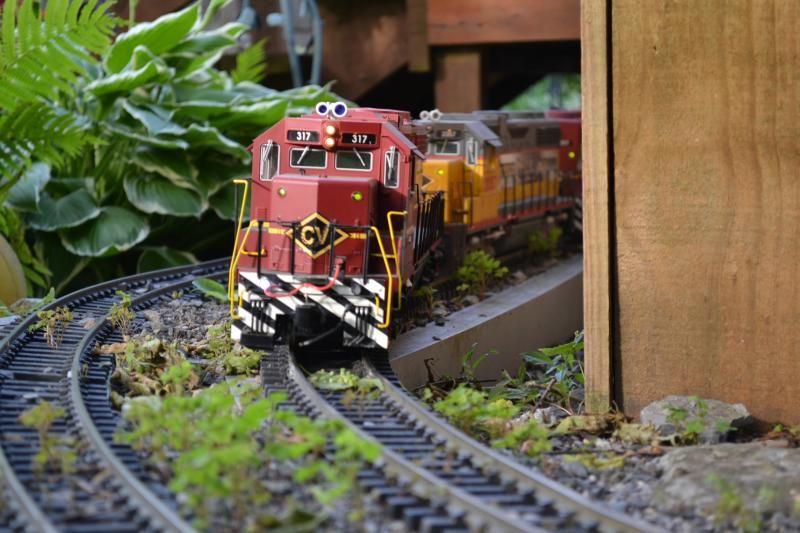Greg Elmassian said:
More than 2 trains is a compulsion?
I run mainline passenger trains with 3 locos… and that is not a compulsion.
OK guys, Here is what Mike has. I stopped by today in the rain. As you can see the track work is in terriable condition. He really wants to get trains running for the RV guests, and then make improvements along the way.
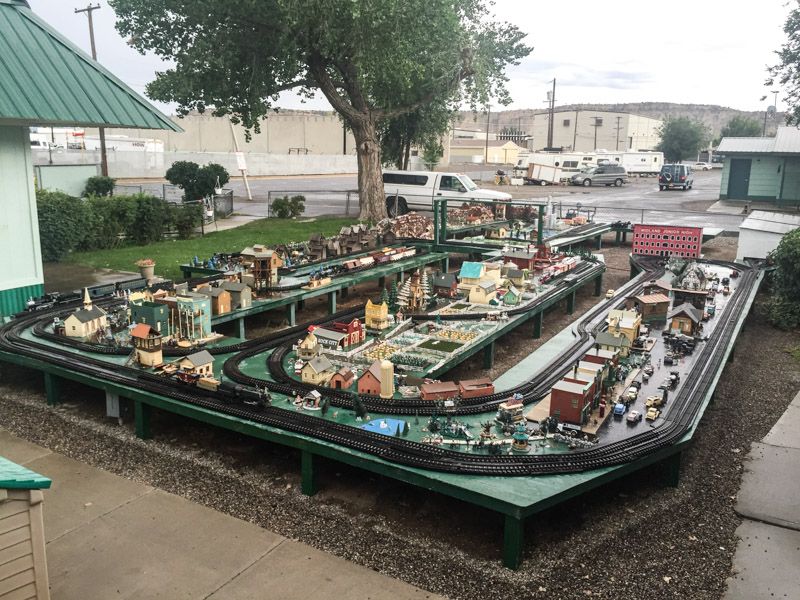
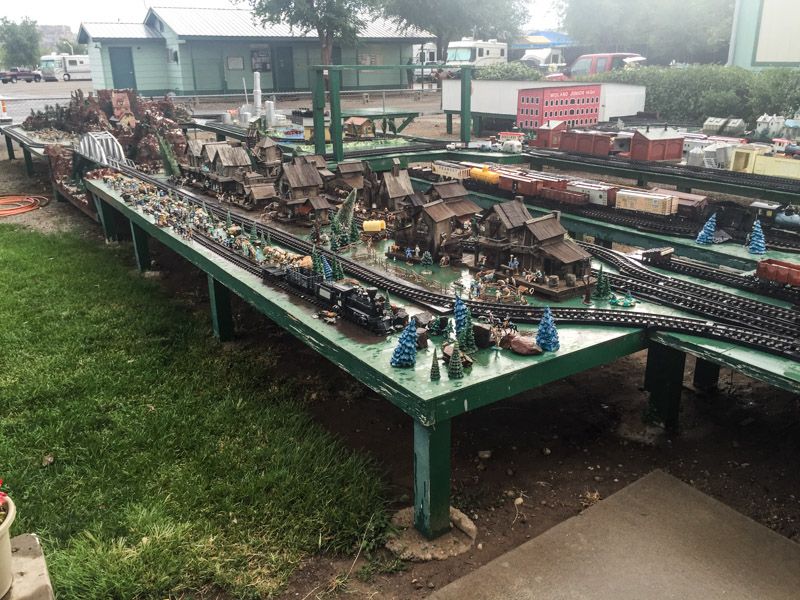
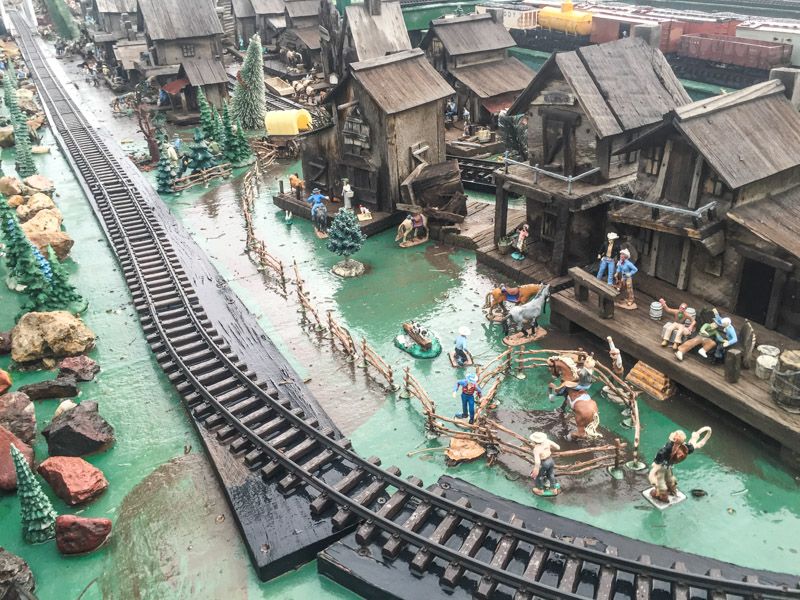
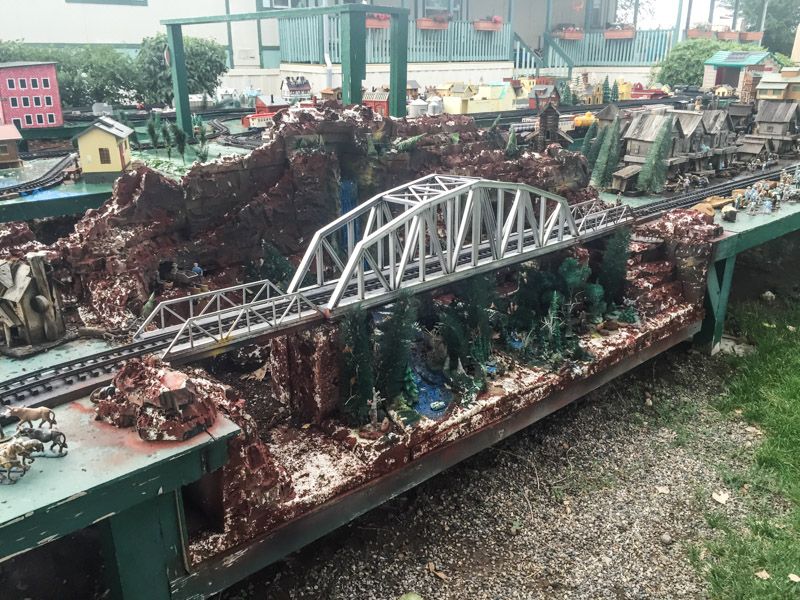
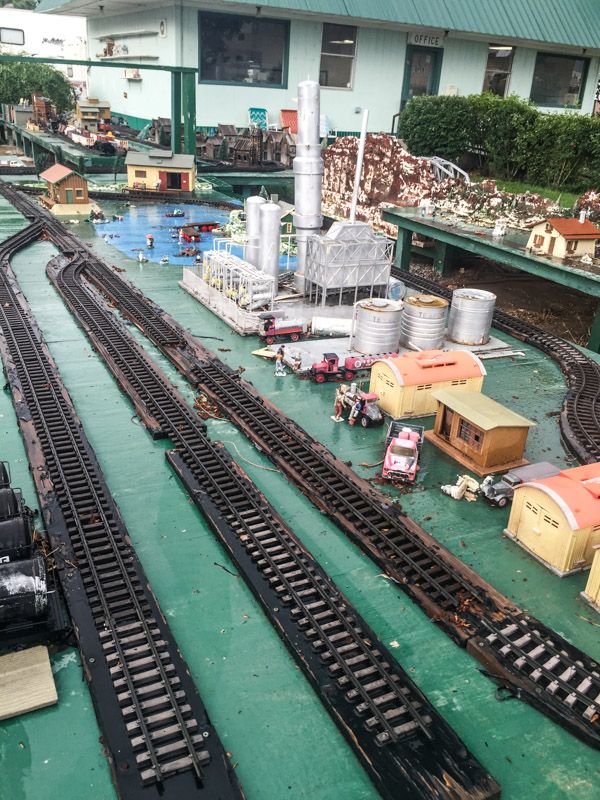
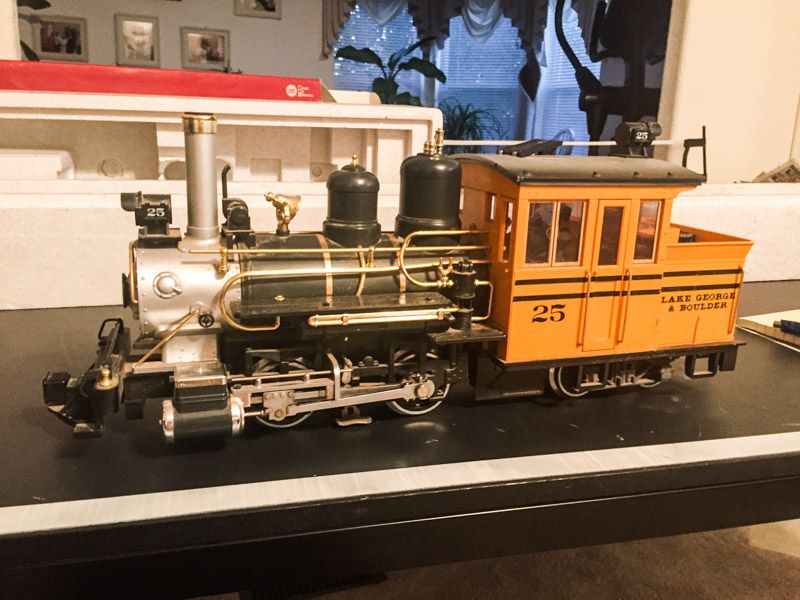
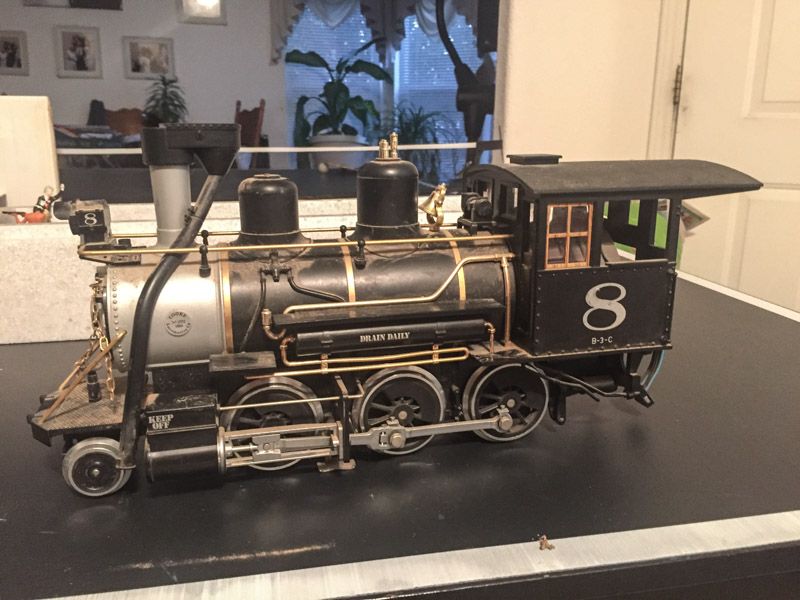
Mike’s run the bumblebee around my layout and it runs really good. It needs a good servicing buts does good job, and the sound card works. He has 20-30 assorted cars, Mostly Bachmann and LGB.
I think the easiest answer at this time, would be RC/Batt. To get something running, I’ve offered up a bunch of rail-clips to help align the first loop to unable states, as we work on the rest, and add sections as it gets done.
Still looking into alternatives to the Crest System.
Dave
Cool, 2 locos and DCC? interesting. Yeah, switch him over to battery tomorrow, although the bad joiners will also result in derailments, since they cannot be aligning the rails well.
Be sure to tell him that he will have to replace the joiners that do not align the rails.
So change to battery, figure out some remote system, figure out some remote control for switches if he wants.
I’d go AirWire, and then he can remotely control switches/turnouts too, and he will have all the capabilities he had with DCC.
Greg
David Maynard said:
Greg, Dave said;
Mike has said that $1000 isn’t out of the question.
So that, to me, answers a few questions. He has 2 locomotives, and is willing to go up to $1,000.
There has to some system in-between that he could get running and expand with as he gets more rolling stock, and a few more engines then the two LGB he now has.
And it seams that track power is a non starter.
cleaning 3200 spots and adding 1600 jumpers, sure seems a lot daunting to someone thats wants to run trains.
So he is willing to spend the money, but not the time to get track power back out there. Answering your question of;
The answers would be pretty pertinent to the best solution unless you have already decided that battery is the only answer
Dave thanks for the pictures. Now that I see what he has, impressive as it is, I understand why restoring track power aint going to happen.
Greg… The layout never had DCC… Always DC track power. He got at least 2 LGB 10A power supplies in the deal, maybe three. Prior owner pulled ALL the wiring for some reason, even the buss wires, and LGB rail feed clips, He has a box of the removed power clip ons. I believed that the track work got so bad that the prior owner ripped it all out in frustration.
Please… Why do you like “Airwire” over the other available systems. Your opinion counts, and my ignorance hinders.
Dave
Sorry Dave, you mentioned DCC twice in your post… re-reading carefully, I see you interspersed comments about yourself, which were not meant to have anything to do with your friend’s layout.
Greg
Yeah sad to see CREST electronics close their doors.
Oh well not new in the world of business, as I bought a ‘08 SaturnOutlook (and in less time than my ‘recent’ CREST Revo’ acquisitions timeline) GM closed down the Saturn division. Purchased at a time when the dealers were still chattering it would not happen. Luckily engine/drivetrain parts from their other 3(?) divisions related platform models are usable in the Saturn.
doug c
p.s. “…cleaning 3200 spots and adding 1600 jumpers, sure seems a lot daunting to someone thats wants to run trains….”
Nice to see someone save a retiring layout, but this is not a RTR hobby as most of use know !! Less maintenance work than on a principal residence but still …
IF Aristo (brass) joiners are installed properly they work well in most locales ! I know mine are still !
Considering all the chatter about pulling them to replace with third party big’uns he might want to put a call out for the unused AC joiners (plus requisite teeny screws). I pulled off/upgraded all lgb ‘slipperies’ on the few lgb track sections i have in place. I’ve always meant to put a call out for them vs they end up rusting away in a overfilled landfill somewheres !
Wendell, I have stainless track, and there are still quite a few joints out on my railroad that are still the slip on joiners. I was surprised at how many are still out there doing their job. But, at least half have failed over the last decade plus, and even the Hillman’s that replaced many of the Aristo joiners have also failed. So, no, this isn’t usually a RTR hobby. But that there is half of the fun.
While I can understand not wanting to fix the track issues I would think if he wants to operate the layout as an attraction or for the entertainment of guests that battery power would not be the best choice. From the looks of things there are track issues that need to be fixed for reliable running anyway. I say this as a diehard battery power person but for continuous roundy roundy use I would think track power would be a better choice !
Have him hire someone to solder the jumpers, will certainly cost less than $1000…
And it will certainly cost less than outfitting 2 locos with batteries, control systems, chargers and extra batteries to run longer than just a few hours.
Greg
I agree for continuous running track power is the way to go. Why not focus on just getting 1 loop up at a time up and running. I’m a huge fan of hard soldered track. It essentially becomes an 8 gauge (or close to it) solid circuit with very few feeders it also requires no real maintenance. Of course the switches should be clamped in place. A small wire brush and some liquid flux and 60/40 rosin core solder goes a long way. Whether he uses clamps or solders it the track still needs repaired and might seem like a daunting task however it is elevated somewhat with no landscape or ground cover to deal with.
For a thousand bucks why not buy new rail/track and keep the DC? Beats the cost of labor to clean up all those joints plus better track in the end.
Dos centavos …
Uhh… 800 feet and 25 switches… show me where track is $1 a foot and I’ll sell my stocks and buy track (http://www.largescalecentral.com/externals/tinymce/plugins/emoticons/img/smiley-laughing.gif)
(by the way that is 1600 jumpers not 3200, 2 jumpers connects 2 pieces, 3200 solder points)
A dremel to wire brush the spots where the jumpers are going, a brush for flux, a large soldering iron, it does not take long.
Jumpers soldered on well can be virtually indestructible.
It all looks easy to get to, could pull sections off at a time and solder on a bench.
Greg
John Caughey said:
For a thousand bucks why not buy new rail/track and keep the DC? Beats the cost of labor to clean up all those joints plus better track in the end.
Dos centavos …
Yeah, a first cup o joe; weak idea… never mind (http://www.largescalecentral.com/externals/tinymce/plugins/emoticons/img/smiley-embarassed.gif)
Who would do such a tedious job cheap?(http://www.largescalecentral.com/externals/tinymce/plugins/emoticons/img/smiley-money-mouth.gif)
edit; because some how I posted and got the upload editor… too.
I might as well throw my hat in this ring.
I agree with Gary B that for a continuous running operation such as a display layout, track power (regardless of control schema is the best option)
I agree with Rooster that soldered rail is the best to make for maintenance free joints, however I would do them differently. I would recommend a distance of 1" or so back from the end of the rail drill a hole through the base of the rail angled through the radius where the web meets the base, large enough for a #14 solid wire. This method allow moving the hole to accommodate tie style. Solder a 6"length of wire to each rail on each end. Use standard rail joiners rigid to one rail only, to allow for expansion and contraction. When assembling the track, solder the wires for the adjoining rail sections for electrical continuity. Wires may be trimmed at assembly, but remember to leave some extra to allow for movement. I agree that a Hillman/Splitjaw connector at switches is a good choice. Fix the switches to the road bed and gap the rest of the rail sections and let them float. If properly gaped, occasionally fixing a section of track will help maintain the alignment, but not impede expansion/contraction with changes in temperature.
Several items that seem to have been left out of this conversation that are usually ‘Why businesses stop running trains’ are maintenance related. First is locomotive maintenance. Folks seem to forget that in a hobby environment we put less mileage on a locomotive in a year of running that a business puts on in a couple of weeks. How many of us put 12 or more hours per day on a loco? I don’t believe too many. Set it and forget it will not work, even the best manufactured of our locos is not designed for that kind of running. And unfortunately, the hobby shop never tells these businesses that maintenance is required.
Second, steel wheels on brass track, track looses. I recently investigated a track system for a local children’s museum. The inside rail head of the outer rail was nearly non existent. Of course the result was continuous derailments, resulting the the system being shut down. No one told them that the track would wear away and require replacement. If you go the alternate route of plastic wheels, especially of this is outdoor (and it appears to be), the deposition of plastic on the rail generating electrical contact issues with the loco will be the result. This will generate more harsh running for the loco, and again back to the loco maintenance issue.
Next is track cleaning. Tell the business that they will need to clean the track once (or more) a day involving someones hours on the payroll and it becomes less attractive. LGB track cleaning locos do a great job but they add to the wear on the track, and are getting expensive and hard to find. Manual methods are less aggressive on the track, but more time consuming.
And in the maintenance issue, lots of long running times (experience by a fellow club member) will wear out plastic rolling stock side frames. He has tried installing brass sleeves which help but is not a solution. I believe he is experimenting with installing ball bearings but has not reported back on that. No matter how you lubricate the axle ends, the steel is still harder than the plastic and the long runs will generate heat which softens the plastic allowing for more wear. Metal side frames such as Hartford and Ozark and other sell will do better but the steel is still harder. To give you an order of magnitude, the outer loop of our club layout is approximately 400 lineal feet. A 31mm diameter wheel will turn 3,933 revolutions in that distance. If my memory is correct it take my K27 about 4 minutes to make a turn. That is about 180 laps, times the 3933 and the axle turns 707,940 revolutions of 12 hours.
Just some things to think about.
Bob C.
deleted
Harvey, budget is $1000, he has 800 feet of track an 25 switches… see post 5 up also. Track does not cost $1 per foot in the united states, and definitely not in florida. (http://www.largescalecentral.com/externals/tinymce/plugins/emoticons/img/smiley-cool.gif)
So at anything over a buck a foot, the budget is blown. Also, the rails are fine, just the joiners. If you were to pull up the track, just add joiners and put it back down. Rail clamps cost less than track.
John, I love ya bro! Actually I’m sure you could find someone for $25 an hour, that’s $200 a day, and I know I could do it in 2-3 days at 8 hour days. that’s $400 to $600, within budget.
Do it assembly line style, dremel 20 foot of track, paste them up, and solder one end, boom boom boom.
Greg

